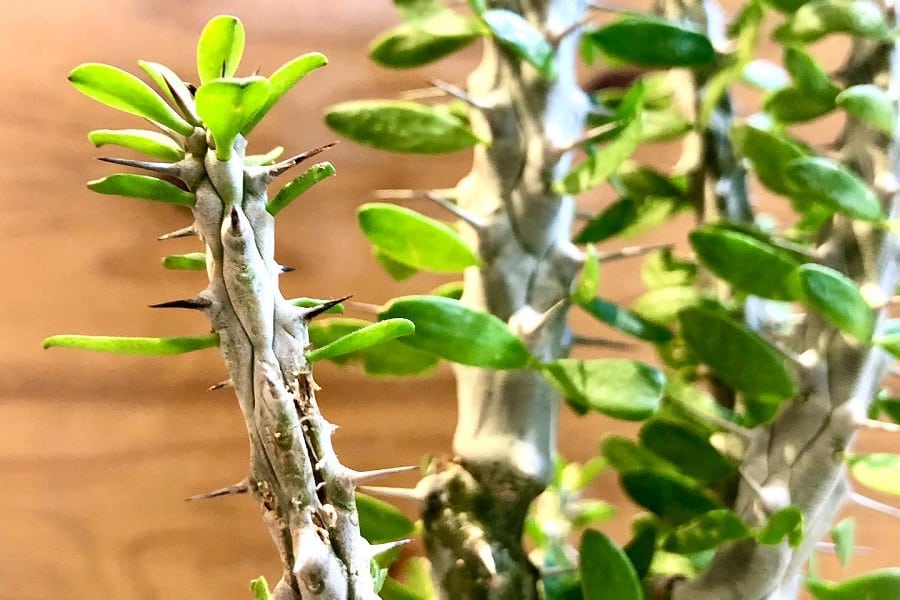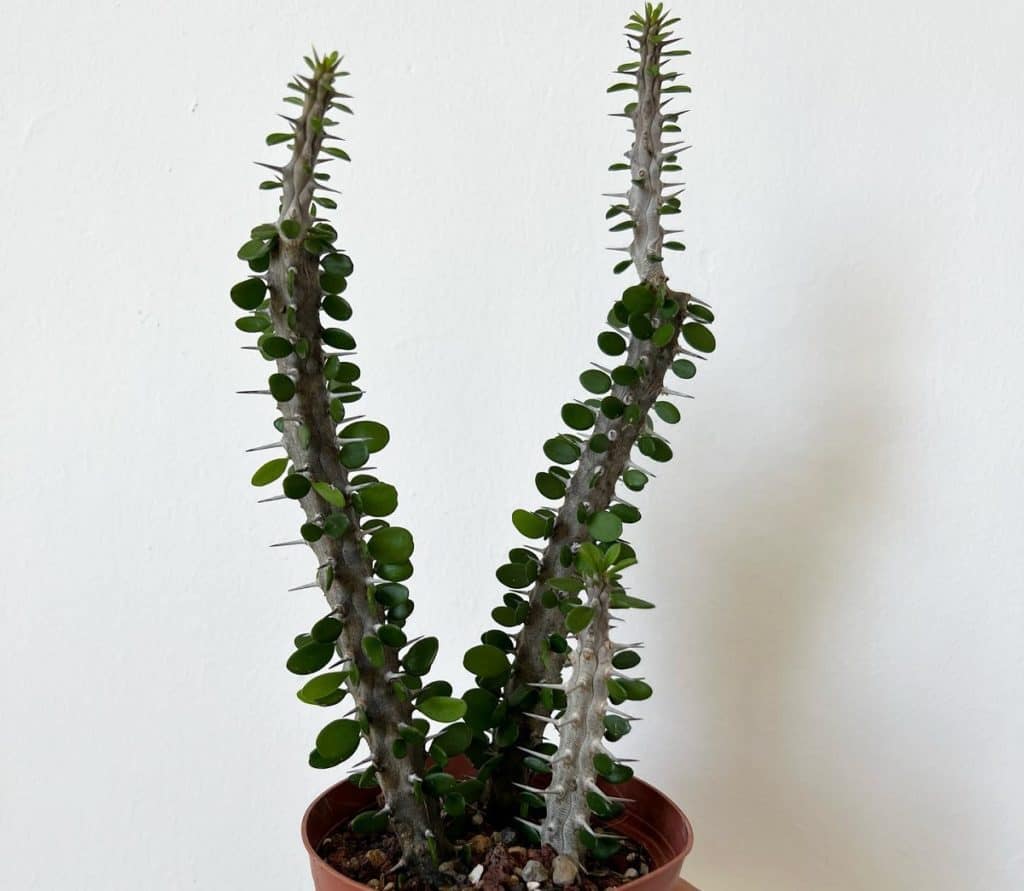Alluaudia procera: Characteristics and Care
Have you ever seen a plant that looks like something straight out of a Dr. Seuss book? Meet the Alluaudia procera, also known as the Madagascar Ocotillo! This quirky succulent, native to the island of Madagascar, is a true head-turner with its green, rounded leaves and spiky stems. But don’t let its unique appearance fool you – this plant is a breeze to care for, and propagating it is a rewarding adventure. Let’s dive in!

Related Post:
1,000 Types Of Succulents [With Pictures]
Alluaudia procera Care Requirements
Light Requirements
The Madagascar Ocotillo loves basking in the sun’s rays. Aim to provide it with 6-8 hours of direct sunlight daily, preferably in the morning. If you live in a scorching hot area, offer some afternoon shade to prevent sunburn. Indoors? No problem! Just invest in some grow lights to keep your plant happy.
Watering Needs
Like most succulents, the Madagascar Ocotillo is drought-tolerant. Wait until the soil is completely dry before watering, then soak it thoroughly. A pot with drainage holes is essential to prevent root rot. Pro tip: Let the soil dry out during the winter months when the plant is dormant.
Soil Preferences
This plant thrives in well-draining, coarse soil mixes. Look for a high-quality succulent or cactus mix, or create your own by combining regular potting soil with perlite or coarse sand. The loose texture ensures excess moisture can escape while allowing air to circulate around the roots.

Fertilizing Routine
The Madagascar Ocotillo is a low-maintenance plant when it comes to fertilizing. If your plant seems stunted, you can give it a gentle boost with a balanced fertilizer diluted to one-quarter strength during the growing season.
Climate Considerations
This plant loves warm weather and can tolerate temperatures down to around 32°F (-0°C). However, it can’t handle frost, so if you live in a cold climate, bring your Madagascar Ocotillo indoors for the winter.
Pest and Disease Prevention
With proper care, pests and diseases are rarely an issue for the Madagascar Ocotillo. Keep an eye out for common houseplant pests like scale or mealybugs, and treat with insecticidal soap or neem oil if necessary. Root rot can be a concern, so be mindful of overwatering.
Pruning
As the Madagascar Ocotillo matures, it can grow quite tall, reaching up to 20 feet! To maintain a manageable size and encourage bushier growth, pruning is recommended. Before the growing season begins, use clean pruners or scissors to trim back the stems by a few inches. This rejuvenation pruning will stimulate new growth and help keep the plant’s size under control.
Potting and Repotting

For initial potting, select a well-draining container with drainage holes. Ensure the pot is deep enough to accommodate the plant’s extensive root system. Use a coarse, well-draining succulent or cactus soil mix to provide the ideal growing medium.
The Madagascar Ocotillo is a slow-growing plant and doesn’t require frequent repotting. However, if the plant outgrows its current container or the soil becomes depleted, it’s time for a size upgrade. Every 2-3 years, carefully remove the plant from its pot and replant it in a slightly larger container with fresh succulent soil. This will provide the plant with the space and nutrients it needs to continue thriving.
Madagascar Ocotillo Propagation
Propagating this unique plant is a fun and rewarding experience! Here’s how to do it:
From Seeds (if you can find them!)
- Soak the seeds overnight before sowing in a well-draining seed-starting mix.
- Cover the seeds with a thin layer of soil and keep the mix moist until germination.
- Once seedlings emerge, provide bright light and water sparingly.
- Transplant the strongest seedlings into individual pots once they develop their first set of true leaves.
From Stem Cuttings (the easiest method)
- Using a clean, sharp knife or pruners, take 4-6 inch stem cuttings from a healthy mother plant.
- Allow the cuttings to callous over for a few days before planting.
- Dip the calloused end in rooting hormone powder (optional but recommended).
- Plant the cuttings in a well-draining succulent or cactus mix, burying a third of the stem.
- Water sparingly and provide bright, indirect light.
- With patience, roots should emerge in 4-8 weeks, and new growth will follow.
